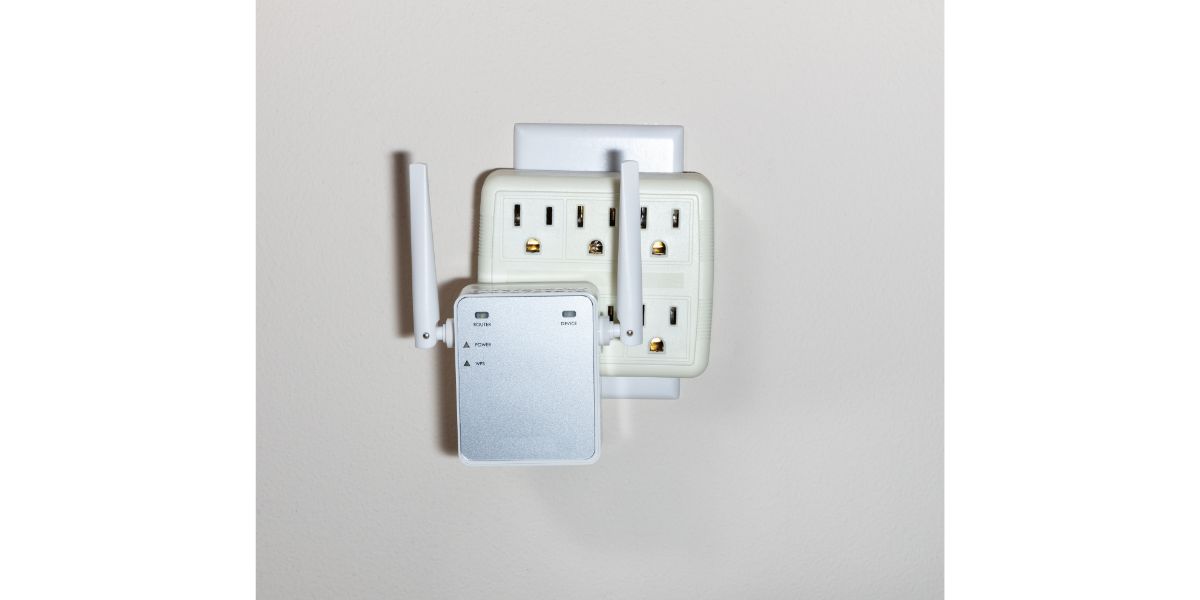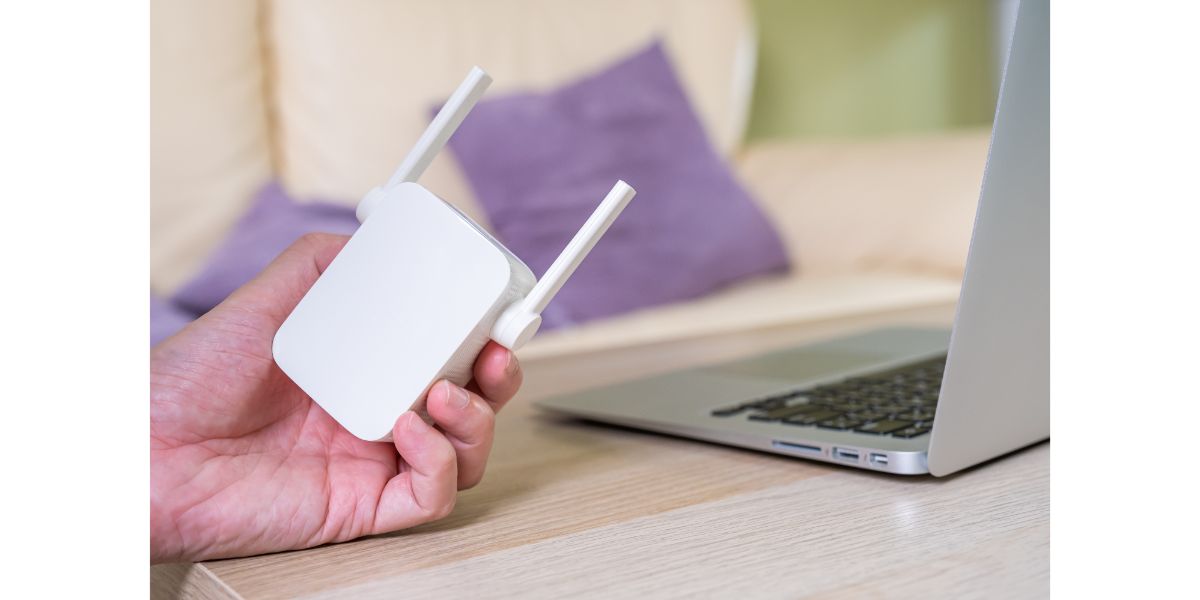Disclaimer: This post may contain affiliate links, meaning we get a small commission if you make a purchase through our links, at no cost to you. For more information, please visit our Disclaimer Page.
When your home has WiFi dead zones, installing an extender is cheaper than upgrading your internet plan. However, the extender rebroadcast signal seems weaker than the signal from the router. So what makes the extender signal weaker?
WiFi extenders seem to reduce the speed because of bandwidth limitations. The extender divides its bandwidth between the router, signal source, and connected devices. This causes it to transmit weaker signals compared to the router.
This article discusses in detail how WiFi extenders affect your internet speed. Let’s dive in.
Table of Contents
How WiFi Extenders Affect Your Internet Speed
Before diving into this topic, let’s distinguish between WiFi and internet speed.
WiFi speed is the rate at which devices communicate to your router to pick an internet connection signal.
On the other hand, internet speed refers to the rate at which your devices communicate with different servers worldwide. It is the megabits per second that your service provider gives you, depending on your subscription.
Usually, a WiFi extender does not affect internet speed. However, it affects the WiFi speed and hence the network connection of devices.
Positive Ways a WiFi Extender Affects WiFi Speed
If you want an internet connection in every corner of your home, using a WiFi extender benefits you in the following ways:
- Enhancing signal strength: An extender increases the signal range of your existing WiFi by duplicating and rebroadcasting it. This gives areas that had a weak or no WiFi signal access to a stronger signal. Your devices can communicate more effectively with your router via the extender.
- Expanding WiFi coverage: With a WiFi extender, you can give every room in your house access to WiFi, irrespective of how far it is from the router. Also, you can enjoy your WiFi outdoors because the extender carries the signal beyond the house walls.
- Reducing device congestion: A WiFi extender helps to reduce congestion by distributing the load of connected devices across a network. Some devices connect directly to the router, and others to the extender.
- Providing multiple access points: A WiFi extender helps create several internet access points around your office or home. This reduces the distance between devices and internet sources, providing a stable and stronger WiFi signal.
Negative Ways a WiFi Extender Affects WiFi Speed
Although extenders can boost WiFi coverage, they can also reduce WiFi speed because of the following reasons:
- Increased latency: A high latency means there are delays in data transmission. A WiFi extender picks up a router’s signal, processes it, and transmits it to other devices. This causes a delay in data transfer, slowing the signal transmitted from the extender.
- Reduced bandwidth: A router cannot receive and send network signals at the same time. So, the extender has to rebroadcast the router’s signal. The bandwidth is divided by two, and the maximum signal you can get from the extender is half the router’s speed.
To learn more about how bandwidth affects your internet speed, read this article: This Is How Bandwidth Affects Internet Speed.
- Signal interference: During processing, a WiFi extender can change the original signal, causing it to degrade. Also, items within the house can absorb and block signals during transmission.
- Lack of compatibility: WiFi extenders are incompatible with all devices and network configurations. This leads to a weak WiFi signal and slows internet speed in areas relying on the extender for connectivity.
Can You Enhance the Efficiency of Your WiFi Extender?
Having a poor connection causes disruption and time wastage. Fortunately, you can enhance WiFi extender efficiency in the following seven ways:
- Optimal Placement: The further away the extender is from the router, the weaker the signal the extender redistributes. Your extender should be centrally located between the router and dead zones. It should also be high above and away from electronic devices to prevent signal obstruction.
- Upgrade to the latest firmware: Manufacturers regularly upgrade the firmware for devices to operate efficiently. Such updates bring alterations to the program and can cause delay to your extender if you have not updated. While upgrading, you should ensure the firmware matches your hardware version.
Here is a YouTube video explaining how to update your firmware:
- Remove barriers: WiFi signals do not perform when there are barriers around. If you have positioned your extender between walls, furniture, and other barriers, the signal transmitted will be weak. For a strong signal, place your extender above and away from physical barriers.
- Use a wired connection: Though a wireless connection is easy to install and flexible, it increases signal transmission interference. If possible, connect the extender to the router using an Ethernet cable. Doing this prevents signal loss and interference by objects in the surrounding.
- Upgrade to a more powerful WiFi extender: WiFi extenders that use the latest technology and antennae have a better range and speed and can transmit a stronger signal. Changing to a modest WiFi extender compatible with your router configuration can help improve signal transmission.
- Enable your WiFi Extender security features: Protecting your network connection using a password or firewall prevents unauthorized devices from accessing and using your signal. This helps to moderate connected devices, minimizing overcrowding which reduces network strength.
- Optimize the WiFi extender performance: Each extender comes with adjustable settings, which you can finetune to a configuration that gives you a strong signal.
Does the Type of Extender Influence WiFi Speed?
As technology advances, WiFi extenders also keep evolving to improve efficiency. WiFi extenders can differ in performance, connectivity, and signal transmission speed. So, if the signal transmitted from the extender is weak, it could be because of the model of the extender you are using.
Let’s discuss some types of WiFi extenders and how they impact WiFi speed.
Single-Band Extenders
Single-band extenders are the most affordable and common WiFi extenders in the market. They use a single-band frequency, usually 2.4 GHz. This means that the extender uses the same frequency to communicate with the WiFi and connected devices.
Single-band extenders are less powerful and have small signal coverage. Also, they are prone to overcrowding and will work best in small to medium-sized houses without many obstructions and electronic devices.
Dual-Band Extenders
Dual-band extenders work with two WiFi frequencies, usually 2.4 GHz and 5 GHz. By operating on both bands, these extenders provide broader coverage and faster speeds than single-band extenders. They can also support more devices at once.
You can put multiple devices on each WiFi band and prioritize which band each device will use. Devices that require a high bandwidth can use 5 GHz, and non-bandwidth sensitive devices 2.4 GHz. Using two bands reduces overcrowding and WiFi lag common in single-band extenders.
Tri-Band Extenders
Tri-band WiFi extenders are more efficient in extending wireless network range than dual-band extenders. They have three wireless networks— one 2.4 GHz network and two 5 GHz networks.
With a tri-band extender, one 5 GHz network communicates with your router, while the other 5 GHz and 2.4 GHz networks provide extended coverage to your devices. This ensures that your devices get the best possible speeds and signal strength, even far from your router.
Tri-band extenders are ideal for large homes or offices with multiple floors or thick walls. But, their efficiency depends on the original WiFi signal strength.
Alternative Solutions to WiFi Extenders
If you are looking for alternatives to help you overcome WiFi extender hurdles, below are some options to consider:
Mesh WiFi Systems
A mesh WiFi system is an advancement of the traditional WiFi system. Unlike traditional WiFi setups that use a single router to provide signal coverage, mesh systems use multiple points that work together to provide better coverage and reduce dead spots.
The mesh network points communicate wirelessly with one another to broadcast signals without a switch, allowing fast data routing.
In terms of performance, mesh WiFi systems provide speeds similar to traditional wired networks, which you can speed up or down depending on your environmental needs.
Mesh networks are more resilient to interference than extenders and can optimize signal performance in hard-to-cover areas.
Powerline Adapter
Like WiFi extenders, powerline adapters efficiently extend your network coverage to areas with weak and inconsistent signals. However, the mechanism of signal transmission of the two differs.
Powerline adapters use your home’s existing electrical wiring to transmit data. The adaptor has a wall socket plug and Ethernet cables for connecting your devices directly to the router.
Using Ethernet cables prevents data loss in the airwaves during transmission, and you’ll get a strong signal. The con is that you’ll have to use long cables if the dead spot is far from the router, which is not pretty for your house.
Final Thoughts
Because a WiFi extender rebroadcasts the signal from your router, they do not reduce WiFi speed.
However, they transmit signals at a slower rate than the router because they have to process them first.
Sources
- Quora: What are the benefits of using a WiFi extender or repeater? Will it slow down my connection or make it faster?
- What’s a Byte: This Is How Bandwidth Affects Internet Speed
- Quora: Do WiFi repeaters/range extenders reduce Internet speed?
- Bolton Technical: Top 12 Materials that Block WiFi Signal
- YouTube: How to update the firmware on your Wireless Range Extender using the Wizard


